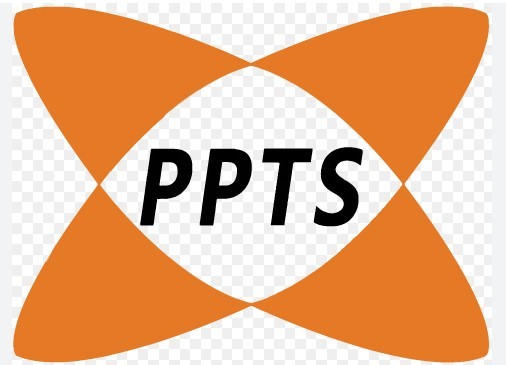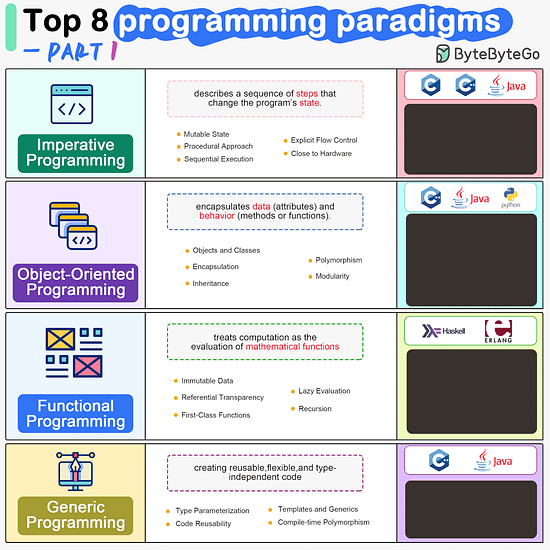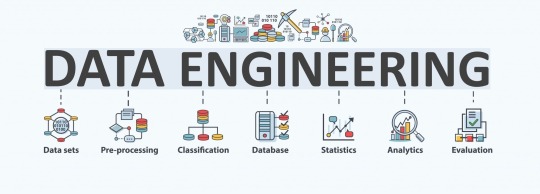#Web Application Using Java
Explore tagged Tumblr posts
Text
10 Tips for Successful Web Application Development
Web applications have become a necessary component of our life in the current digital era.
The foundation of all internet enterprises are web applications, which include social networking sites and e-commerce platforms.
Making a good one takes careful planning, paying attention to details, and doing things the right way. In this blog, we'll share ten important tips to help you make awesome web apps.
Define Your Goals and Target Audience:
It is essential that you define exact objectives and goals for your web application prior to beginning development. Which issue are you attempting to resolve? Who is the intended audience for you? Comprehending these essential elements will direct your decision-making procedure and guarantee that your application fulfills the requirements of your target audience.
2. Choose the Right Technology Stack
The web application's speed, capacity, and reliability will be greatly impacted by the technology stack you select. Take into account elements like databases, hosting environments, frameworks, and programming languages that complement your development team's experience, budget, and project requirements.

3. Give User Experience (UX) top priority
The success of any web application is contingent upon the quality of its user experience (UX). Devote time and resources to creating an aesthetically pleasing and user-friendly interface that works seamlessly on a range of platforms and devices. To continuously hone and improve the UX, do usability testing and collect input from actual users.
4. Use safe coding techniques
From the beginning of the construction of your web application, security should be your first priority. Embrace secure coding techniques including output encoding, strong authentication, and authorization systems. To safeguard your application and its users, keep abreast of the most recent security threats and vulnerabilities. Then, put the necessary remedies in place.
5. Performance-Based Optimization
User engagement and happiness can be greatly impacted by subpar performance. Use techniques to improve the performance of your online application, such as caching, resource minification, content delivery networks (CDNs), and server-side code and database query optimization.
6. Adopt Agile Development
Agile development approaches, like Scrum and Kanban, encourage teamwork, adaptability, and the iterative delivery of functional products. Throughout the development cycle, you may include user feedback, adapt swiftly to changing requirements, and constantly enhance your web application by using an agile strategy.
7. Put automated testing into practice
To make sure your web application is reliable and of high quality, automated testing is necessary. To find and address defects early on and minimize the time and expense associated with maintenance and updates, incorporate unit testing, integration testing, and end-to-end testing into your development process.
8. Make Use of Collaboration and Version Control Tools
Git and other version control systems facilitate collaborative development by enabling several developers to work simultaneously on the same codebase. Code management procedures and effective teamwork guarantee seamless integration, simple rollbacks, and an efficient development process.
9. CI/CD, or continuous integration and deployment
Build, test, and deployment procedures are all automated by CI/CD pipelines, guaranteeing a smooth and effective release cycle. You may speed up the delivery of new features and updates to your online application and decrease human error by integrating continuous integration and continuous delivery, or CI/CD.
10. Keep an eye on and maintain
It is essential to keep an eye on your web application's security, performance, and usage trends once it is released. Put monitoring procedures and technologies in place to quickly detect and resolve any problems. Maintain and update your program on a regular basis to add new features, fix errors, and adjust to evolving specifications and user demands.

If you're looking for expert guidance and support in developing a high-quality web application, consider partnering with Point Perfect Technology Solutions (PPTS).
As a leading provider of web app development services, they offer a team of experienced professionals dedicated to delivering successful projects that meet and exceed client expectations.
Experience the expertise of PPTS firsthand by scheduling a free demo at https://www.pptssolutions.com/contact-us/
#Web Application Development#Java#Angular JS#Mean Stack#Web Services#Web Development Company India#Website Design#odoo erp#odoo erp support#odoo gold partner#odoo services#odoo partner in india#us#france#business
0 notes
Text
☆ 02.10.2023 ☆

Today was the first day of school; we officially started.
I had 2 lectures.
The first one was about operating systems, and we talked about all that happens when you turn on your computer and then turn it off, which was so interesting. The teacher was amazing; honestly, I really liked him. I'll study later today and make a post about it on @codingquill.
The second one was just a little introduction: the professor, again, seemed so cool and well-educated. In this class, we're going to study JAVA JEE for creating web applications. He already gave us an assignment to make the little snake game to check our JAVA skills.
Normally, this evening we would have 2 labs for these exact same classes, but the teachers decided not to do them because we just started.
How was I feeling today?
I honestly did not feel good leaving home. I've been having a depressive episode lately, and once I got to school, I saw my friends, laughed with them, had a nice time, liked the lectures I had, and felt SO MUCH better coming back home.
Which gave the conclusion that uni is actually a place that makes me really happy, and I am so excited for this year to be a good one.
Things I am grateful for?
My good health,
my intelligent mind,
my not giving up mindset,
my friends,
the privilege to study in this field, and the school I am in.
#dear diary#daily life#studies#studywithme#study tips#studystudystudy#studyspiration#studygram#study notes#studyblr#student#study blog#study aesthetic#study motivation#my stuff#study inspiration#studies version#goals#goals setting
157 notes
·
View notes
Text
How to Build Software Projects for Beginners

Building software projects is one of the best ways to learn programming and gain practical experience. Whether you want to enhance your resume or simply enjoy coding, starting your own project can be incredibly rewarding. Here’s a step-by-step guide to help you get started.
1. Choose Your Project Idea
Select a project that interests you and is appropriate for your skill level. Here are some ideas:
To-do list application
Personal blog or portfolio website
Weather app using a public API
Simple game (like Tic-Tac-Toe)
2. Define the Scope
Outline what features you want in your project. Start small and focus on the minimum viable product (MVP) — the simplest version of your idea that is still functional. You can always add more features later!
3. Choose the Right Tools and Technologies
Based on your project, choose the appropriate programming languages, frameworks, and tools:
Web Development: HTML, CSS, JavaScript, React, or Django
Mobile Development: Flutter, React Native, or native languages (Java/Kotlin for Android, Swift for iOS)
Game Development: Unity (C#), Godot (GDScript), or Pygame (Python)
4. Set Up Your Development Environment
Install the necessary software and tools:
Code editor (e.g., Visual Studio Code, Atom, or Sublime Text)
Version control (e.g., Git and GitHub for collaboration and backup)
Frameworks and libraries (install via package managers like npm, pip, or gems)
5. Break Down the Project into Tasks
Divide your project into smaller, manageable tasks. Create a to-do list or use project management tools like Trello or Asana to keep track of your progress.
6. Start Coding!
Begin with the core functionality of your project. Don’t worry about perfection at this stage. Focus on getting your code to work, and remember to:
Write clean, readable code
Test your code frequently
Commit your changes regularly using Git
7. Test and Debug
Once you have a working version, thoroughly test it. Look for bugs and fix any issues you encounter. Testing ensures your software functions correctly and provides a better user experience.
8. Seek Feedback
Share your project with friends, family, or online communities. Feedback can provide valuable insights and suggestions for improvement. Consider platforms like GitHub to showcase your work and get input from other developers.
9. Iterate and Improve
Based on feedback, make improvements and add new features. Software development is an iterative process, so don’t hesitate to refine your project continuously.
10. Document Your Work
Write documentation for your project. Include instructions on how to set it up, use it, and contribute. Good documentation helps others understand your project and can attract potential collaborators.
Conclusion
Building software projects is a fantastic way to learn and grow as a developer. Follow these steps, stay persistent, and enjoy the process. Remember, every project is a learning experience that will enhance your skills and confidence!
3 notes
·
View notes
Text
AI Code Generators: Revolutionizing Software Development
The way we write code is evolving. Thanks to advancements in artificial intelligence, developers now have tools that can generate entire code snippets, functions, or even applications. These tools are known as AI code generators, and they’re transforming how software is built, tested, and deployed.
In this article, we’ll explore AI code generators, how they work, their benefits and limitations, and the best tools available today.
What Are AI Code Generators?
AI code generators are tools powered by machine learning models (like OpenAI's GPT, Meta’s Code Llama, or Google’s Gemini) that can automatically write, complete, or refactor code based on natural language instructions or existing code context.
Instead of manually writing every line, developers can describe what they want in plain English, and the AI tool translates that into functional code.
How AI Code Generators Work
These generators are built on large language models (LLMs) trained on massive datasets of public code from platforms like GitHub, Stack Overflow, and documentation. The AI learns:
Programming syntax
Common patterns
Best practices
Contextual meaning of user input
By processing this data, the generator can predict and output relevant code based on your prompt.
Benefits of AI Code Generators
1. Faster Development
Developers can skip repetitive tasks and boilerplate code, allowing them to focus on core logic and architecture.
2. Increased Productivity
With AI handling suggestions and autocompletions, teams can ship code faster and meet tight deadlines.
3. Fewer Errors
Many generators follow best practices, which helps reduce syntax errors and improve code quality.
4. Learning Support
AI tools can help junior developers understand new languages, patterns, and libraries.
5. Cross-language Support
Most tools support multiple programming languages like Python, JavaScript, Go, Java, and TypeScript.
Popular AI Code Generators
Tool
Highlights
GitHub Copilot
Powered by OpenAI Codex, integrates with VSCode and JetBrains IDEs
Amazon CodeWhisperer
AWS-native tool for generating and securing code
Tabnine
Predictive coding with local + cloud support
Replit Ghostwriter
Ideal for building full-stack web apps in the browser
Codeium
Free and fast with multi-language support
Keploy
AI-powered test case and stub generator for APIs and microservices
Use Cases for AI Code Generators
Writing functions or modules quickly
Auto-generating unit and integration tests
Refactoring legacy code
Building MVPs with minimal manual effort
Converting code between languages
Documenting code automatically
Example: Generate a Function in Python
Prompt: "Write a function to check if a number is prime"
AI Output:
python
CopyEdit
def is_prime(n):
if n <= 1:
return False
for i in range(2, int(n**0.5) + 1):
if n % i == 0:
return False
return True
In seconds, the generator creates a clean, functional block of code that can be tested and deployed.
Challenges and Limitations
Security Risks: Generated code may include unsafe patterns or vulnerabilities.
Bias in Training Data: AI can replicate errors or outdated practices present in its training set.
Over-reliance: Developers might accept code without fully understanding it.
Limited Context: Tools may struggle with highly complex or domain-specific tasks.
AI Code Generators vs Human Developers
AI is not here to replace developers—it’s here to empower them. Think of these tools as intelligent assistants that handle the grunt work, while you focus on decision-making, optimization, and architecture.
Human oversight is still critical for:
Validating output
Ensuring maintainability
Writing business logic
Securing and testing code
AI for Test Case Generation
Tools like Keploy go beyond code generation. Keploy can:
Auto-generate test cases and mocks from real API traffic
Ensure over 90% test coverage
Speed up testing for microservices, saving hours of QA time
Keploy bridges the gap between coding and testing—making your CI/CD pipeline faster and more reliable.
Final Thoughts
AI code generators are changing how modern development works. They help save time, reduce bugs, and boost developer efficiency. While not a replacement for skilled engineers, they are powerful tools in any dev toolkit.
The future of software development will be a blend of human creativity and AI-powered automation. If you're not already using AI tools in your workflow, now is the time to explore. Want to test your APIs using AI-generated test cases? Try Keploy and accelerate your development process with confidence.
2 notes
·
View notes
Text
Fowtools - Silver
GUIDs, or Globally Unique Identifiers, are 128-bit numbers that are generated to ensure uniqueness in various applications. They are also referred to as UUIDs, or Universally Unique Identifiers. The purpose of generating GUIDs is to provide a unique identification number that can be used to identify resources such as people, files, web pages, and even colors. Unlike regular registration numbers, which start counting at 1 and can overlap, guid generator in a way that ensures their uniqueness. The use of GUIDs has become increasingly popular in software development, where unique identification numbers are essential for efficient data management. There are different methods of generating GUIDs. One method is random generation, where the system's random-number generator is used to create a 128-bit number. Another method is time-based generation, where a GUID is created based on the current time. Additionally, hardware-based generation involves using a combination of hardware-based information, such as the MAC address, to generate a GUID. These methods ensure that GUIDs are unique and can be used for efficient data management. GUIDs have numerous applications in software development. They are commonly used in enterprise software development in languages such as C# and Java. In.NET Core, GUIDs are generated by creating a random number of 128 bits and performing a couple of bitwise operations. GUIDs are also used to identify hardware, software, and network resources. Moreover, almost all major programming languages have built-in libraries to generate GUIDs, making it easy for programmers to ensure uniqueness in their applications. The use of GUIDs has become essential in modern software development, where efficient data management is crucial for the success of any project.
297 notes
·
View notes
Text

Ubuntu is a popular open-source operating system based on the Linux kernel. It's known for its user-friendliness, stability, and security, making it a great choice for both beginners and experienced users. Ubuntu can be used for a variety of purposes, including:
Key Features and Uses of Ubuntu:
Desktop Environment: Ubuntu offers a modern, intuitive desktop environment that is easy to navigate. It comes with a set of pre-installed applications for everyday tasks like web browsing, email, and office productivity.
Development: Ubuntu is widely used by developers due to its robust development tools, package management system, and support for programming languages like Python, Java, and C++.
Servers: Ubuntu Server is a popular choice for hosting websites, databases, and other server applications. It's known for its performance, security, and ease of use.
Cloud Computing: Ubuntu is a preferred operating system for cloud environments, supporting platforms like OpenStack and Kubernetes for managing cloud infrastructure.
Education: Ubuntu is used in educational institutions for teaching computer science and IT courses. It's free and has a vast repository of educational software.
Customization: Users can customize their Ubuntu installation to fit their specific needs, with a variety of desktop environments, themes, and software available.
Installing Ubuntu on Windows:
The image you shared shows that you are installing Ubuntu using the Windows Subsystem for Linux (WSL). This allows you to run Ubuntu natively on your Windows machine, giving you the best of both worlds.
Benefits of Ubuntu:
Free and Open-Source: Ubuntu is free to use and open-source, meaning anyone can contribute to its development.
Regular Updates: Ubuntu receives regular updates to ensure security and performance.
Large Community: Ubuntu has a large, active community that provides support and contributes to its development.
4 notes
·
View notes
Text
Mastering Data Structures: A Comprehensive Course for Beginners
Data structures are one of the foundational concepts in computer science and software development. Mastering data structures is essential for anyone looking to pursue a career in programming, software engineering, or computer science. This article will explore the importance of a Data Structure Course, what it covers, and how it can help you excel in coding challenges and interviews.
1. What Is a Data Structure Course?
A Data Structure Course teaches students about the various ways data can be organized, stored, and manipulated efficiently. These structures are crucial for solving complex problems and optimizing the performance of applications. The course generally covers theoretical concepts along with practical applications using programming languages like C++, Java, or Python.
By the end of the course, students will gain proficiency in selecting the right data structure for different problem types, improving their problem-solving abilities.
2. Why Take a Data Structure Course?
Learning data structures is vital for both beginners and experienced developers. Here are some key reasons to enroll in a Data Structure Course:
a) Essential for Coding Interviews
Companies like Google, Amazon, and Facebook focus heavily on data structures in their coding interviews. A solid understanding of data structures is essential to pass these interviews successfully. Employers assess your problem-solving skills, and your knowledge of data structures can set you apart from other candidates.
b) Improves Problem-Solving Skills
With the right data structure knowledge, you can solve real-world problems more efficiently. A well-designed data structure leads to faster algorithms, which is critical when handling large datasets or working on performance-sensitive applications.
c) Boosts Programming Competency
A good grasp of data structures makes coding more intuitive. Whether you are developing an app, building a website, or working on software tools, understanding how to work with different data structures will help you write clean and efficient code.
3. Key Topics Covered in a Data Structure Course
A Data Structure Course typically spans a range of topics designed to teach students how to use and implement different structures. Below are some key topics you will encounter:
a) Arrays and Linked Lists
Arrays are one of the most basic data structures. A Data Structure Course will teach you how to use arrays for storing and accessing data in contiguous memory locations. Linked lists, on the other hand, involve nodes that hold data and pointers to the next node. Students will learn the differences, advantages, and disadvantages of both structures.
b) Stacks and Queues
Stacks and queues are fundamental data structures used to store and retrieve data in a specific order. A Data Structure Course will cover the LIFO (Last In, First Out) principle for stacks and FIFO (First In, First Out) for queues, explaining their use in various algorithms and applications like web browsers and task scheduling.
c) Trees and Graphs
Trees and graphs are hierarchical structures used in organizing data. A Data Structure Course teaches how trees, such as binary trees, binary search trees (BST), and AVL trees, are used in organizing hierarchical data. Graphs are important for representing relationships between entities, such as in social networks, and are used in algorithms like Dijkstra's and BFS/DFS.
d) Hashing
Hashing is a technique used to convert a given key into an index in an array. A Data Structure Course will cover hash tables, hash maps, and collision resolution techniques, which are crucial for fast data retrieval and manipulation.
e) Sorting and Searching Algorithms
Sorting and searching are essential operations for working with data. A Data Structure Course provides a detailed study of algorithms like quicksort, merge sort, and binary search. Understanding these algorithms and how they interact with data structures can help you optimize solutions to various problems.
4. Practical Benefits of Enrolling in a Data Structure Course
a) Hands-on Experience
A Data Structure Course typically includes plenty of coding exercises, allowing students to implement data structures and algorithms from scratch. This hands-on experience is invaluable when applying concepts to real-world problems.
b) Critical Thinking and Efficiency
Data structures are all about optimizing efficiency. By learning the most effective ways to store and manipulate data, students improve their critical thinking skills, which are essential in programming. Selecting the right data structure for a problem can drastically reduce time and space complexity.
c) Better Understanding of Memory Management
Understanding how data is stored and accessed in memory is crucial for writing efficient code. A Data Structure Course will help you gain insights into memory management, pointers, and references, which are important concepts, especially in languages like C and C++.
5. Best Programming Languages for Data Structure Courses
While many programming languages can be used to teach data structures, some are particularly well-suited due to their memory management capabilities and ease of implementation. Some popular programming languages used in Data Structure Courses include:
C++: Offers low-level memory management and is perfect for teaching data structures.
Java: Widely used for teaching object-oriented principles and offers a rich set of libraries for implementing data structures.
Python: Known for its simplicity and ease of use, Python is great for beginners, though it may not offer the same level of control over memory as C++.
6. How to Choose the Right Data Structure Course?
Selecting the right Data Structure Course depends on several factors such as your learning goals, background, and preferred learning style. Consider the following when choosing:
a) Course Content and Curriculum
Make sure the course covers the topics you are interested in and aligns with your learning objectives. A comprehensive Data Structure Course should provide a balance between theory and practical coding exercises.
b) Instructor Expertise
Look for courses taught by experienced instructors who have a solid background in computer science and software development.
c) Course Reviews and Ratings
Reviews and ratings from other students can provide valuable insights into the course’s quality and how well it prepares you for real-world applications.
7. Conclusion: Unlock Your Coding Potential with a Data Structure Course
In conclusion, a Data Structure Course is an essential investment for anyone serious about pursuing a career in software development or computer science. It equips you with the tools and skills to optimize your code, solve problems more efficiently, and excel in technical interviews. Whether you're a beginner or looking to strengthen your existing knowledge, a well-structured course can help you unlock your full coding potential.
By mastering data structures, you are not only preparing for interviews but also becoming a better programmer who can tackle complex challenges with ease.
3 notes
·
View notes
Text
Introduction to SkillonIT Learning Hub- Empowering Rural Talent With World-Class IT Skills
SkillonIT provides IN-Demand IT courses, connecting Rural talent with rewarding IT skills through affordable, accessible and career-focused education. with Guaranteed pathways to internship and high paying jobs, start with us and step into Opportunities at top Tech-leading Companies. Skillonit Learning Hub, located in Buldhana, Maharashtra, is a leading institute dedicated to equipping individuals with cutting-edge technology skills. With a mission to bridge the digital divide, the institute provides high-quality education in various IT and professional development domains. Skillonit focuses on practical, industry-oriented training, ensuring students gain the expertise needed to thrive in today’s competitive job market. The hub is committed to empowering rural talent and shaping the next generation of skilled professionals.

Courses Offered Skillonit Learning Hub offers a diverse range of courses tailored to industry demands, enabling students to master both technical and professional skills.
Blockchain Development — Smart Contracts (Solidity, Rust, Web3.js, Hardhat) — Blockchain Protocols (Ethereum, Solana, Binance Smart Chain, Fantom) — Decentralized Applications (DApps) Development
Front-End Development — HTML, CSS, JavaScript — Frameworks: React.js, Vue.js, Angular — Responsive Web Design & UI Frameworks (Bootstrap, Tailwind CSS)
Back-End Development — Server-side Programming (Node.js, Python, PHP, Java, .NET) — Database Management (MySQL, MongoDB, Firebase, PostgreSQL) — API Development (RESTful APIs, GraphQL, WebSockets)
Full-Stack Development — Front-End + Back-End Integration — MERN Stack Development — Database, Deployment & DevOps Practice
Mobile App Development — Cross-Platform Development (Flutter, React Native)
Unity 3D Game Development — Game Mechanics & Physics — C# Programming for Game Development — Virtual Reality (VR) & Augmented Reality (AR) Integration
Professional UI/UX Design — User Interface Design (Adobe XD, Figma, Sketch) — User Experience Principles — Prototyping, Wireframing & Usability Testing
Professional Graphic Design — Adobe Photoshop, Illustrator, and CorelDraw — Branding & Logo Design — Digital Art & Visual Communication
Digital Marketing — SEO, SEM, and Social Media Marketing — Content Marketing & Copywriting — Google Ads, Facebook Ads & Analytics
Spoken English — Communication Skills & Public Speaking — Accent Training & Fluency Improvement
Personality Development — Business & Corporate Etiquette — Confidence Building & Interview Preparation — Leadership & Teamwork Skills
Location & Contact : Address : Chhatrapati Tower, Above Maratha Mahila Urban, 3rd Floor, Chikhali Road, Buldhana, Maharashtra, 443001.
Contact us
Conclusion : Skillonit Learning Hub is revolutionizing IT and professional education by making technology and essential career skills accessible to aspiring developers, designers, marketers, and professionals. With a strong emphasis on practical learning, industry exposure, and career opportunities, it stands as a beacon of growth for young talent in Buldhana and beyond. Whether you are looking to build a career in tech, marketing, design, or personal development, Skillonit provides the ideal platform to achieve your goals. Join Our Social Community
Skillonit #Education #ITCourses #Buldhana #Maharashtra #IT #Blockchain #Fullstack #Front-end #Back-end #MobileApp #Unity3d #UIUX #Graphicdesign #Digitalmarketing #SpokenEnglish #Personality #development
2 notes
·
View notes
Text

ByteByteGo | Newsletter/Blog
From the newsletter:
Imperative Programming Imperative programming describes a sequence of steps that change the program’s state. Languages like C, C++, Java, Python (to an extent), and many others support imperative programming styles.
Declarative Programming Declarative programming emphasizes expressing logic and functionalities without describing the control flow explicitly. Functional programming is a popular form of declarative programming.
Object-Oriented Programming (OOP) Object-oriented programming (OOP) revolves around the concept of objects, which encapsulate data (attributes) and behavior (methods or functions). Common object-oriented programming languages include Java, C++, Python, Ruby, and C#.
Aspect-Oriented Programming (AOP) Aspect-oriented programming (AOP) aims to modularize concerns that cut across multiple parts of a software system. AspectJ is one of the most well-known AOP frameworks that extends Java with AOP capabilities.
Functional Programming Functional Programming (FP) treats computation as the evaluation of mathematical functions and emphasizes the use of immutable data and declarative expressions. Languages like Haskell, Lisp, Erlang, and some features in languages like JavaScript, Python, and Scala support functional programming paradigms.
Reactive Programming Reactive Programming deals with asynchronous data streams and the propagation of changes. Event-driven applications, and streaming data processing applications benefit from reactive programming.
Generic Programming Generic Programming aims at creating reusable, flexible, and type-independent code by allowing algorithms and data structures to be written without specifying the types they will operate on. Generic programming is extensively used in libraries and frameworks to create data structures like lists, stacks, queues, and algorithms like sorting, searching.
Concurrent Programming Concurrent Programming deals with the execution of multiple tasks or processes simultaneously, improving performance and resource utilization. Concurrent programming is utilized in various applications, including multi-threaded servers, parallel processing, concurrent web servers, and high-performance computing.
#bytebytego#resource#programming#concurrent#generic#reactive#funtional#aspect#oriented#aop#fp#object#oop#declarative#imperative
8 notes
·
View notes
Text
Dev Log Feb 7 2025 - The Stack
Ahoy. This is JFrame of 16Naughts in the first of what I hope will turn out to be a weekly series of developer logs surrounding some of our activities here in the office. Not quite so focused on individual games most of the time, but more on some of the more interesting parts of development as a whole. Or really, just an excuse for me to geek out a little into the void. With introductions out of the way, the first public version of our game Crescent Roll (https://store.steampowered.com/app/3325680/Crescent_Roll juuuust as a quick plug) is due out here at the end of the month, and has a very interesting/unorthodox tech stack that might be of interest to certain devs wanting to cut down on their application install size. The game itself is actually written in Javascript - you know, the scripting language used by your web browser for the interactive stuff everywhere, including here. If you've been on Newgrounds or any other site, they might call games that use it "HTML5" games like they used to call "Flash" games (RIP in peace). Unfortunately, Javascript still has a bit of a sour reputation in most developer circles, and "web game" doesn't really instill much confidence in the gamer either. However, it's turning more and more into the de-facto standard for like, everything. And I do mean everything. 99% of applications on your phone are just websites wrapped in the system view (including, if you're currently using it, the Tumblr app), and it's bleeding more and more into the desktop and other device spaces. Both Android and iOS have calls available to utilize their native web browsers in applications. Windows and Mac support the same thing with WebView2 and WebKit respectively. Heck, even Xbox and Nintendo have a web framework available too (even goes back as far as Flash support for the Wii). So, if you're not using an existing game engine like we aren't and you want to go multi-platform, your choices are either A) Do it in something C/C++ -ish, or now B) Write it in JS. So great - JS runs everywhere. Except, it's not exactly a first-class citizen in any of these scenarios. Every platform has a different SDK for a different low-level language, and none of them have a one-click "bundle this website into an exe" option. So there is some additional work that needs to be done to get it into that nice little executable package.
Enter C#. Everyone calls it Microsoft Java, but their support for it has been absolutely spectacular that it has surpassed Java in pretty much every single possible way. And that includes the number and types of machines that it runs on. The DotNet Core initiative has Mac, Windows, and Linux covered (plus Xbox), Xamarin has Android, and the new stuff for Maui brought iOS into the fold. Write once, run everywhere. Very nice. Except those itty bitty little application lifetime quirks completely change how you do the initialization on each platform, and the system calls are different for getting the different web views set up, and Microsoft is pushing Maui so hard that actually finding the calls and libraries to do the stuff instead of using their own (very strange) UI toolkit is a jungle, but I mean, I only had to write our stream decompression stuff once and everything works with the same compilation options. So yeah - good enough. And fortunately, only getting better. Just recently, they added Web Views directly into Maui itself so we can now skip a lot of the bootstrapping we had to do (I'm not re-writing it until we have to, but you know- it's there for everyone else). So, there you have it. Crescent Roll is a Javascript HTML5 Web Game that uses the platform native Web View through C#. It's a super tiny 50-100MB (depending on the platform) from not having to bundle the JS engine with it, compiles in seconds, and is fast and lean when running and only getting faster and leaner as it benefits from any performance improvements made anywhere in any of those pipeline. And that's it for today's log. Once this thing is actually, you know, released, I can hopefully start doing some more recent forward-looking progress things rather than a kind of vague abstract retrospective ramblings. Maybe some shader stuff next week, who knows.
Lemme know if you have any questions on anything. I know it's kind of dry, but I can grab some links for stuff to get started with, or point to some additional reading if you want it.
3 notes
·
View notes
Text
MDCA (Master Diploma In Computer Application) : Full Form, Eligibility, Duration, Syllabus, Scope

What is the MDCA course?
The Master Diploma in Computer Application (MDCA) is a professional diploma course that helps you learn both basic and advanced computer skills. It is designed for students, job seekers, and working professionals who want to improve their knowledge of computers and information technology. MDCA full form is Master Diploma in Computer Application (MDCA). This course covers practical topics like using Microsoft Office, programming, web design, accounting software, and internet tools. It is a good option for those who want to get a job in an office, start a career in IT, or continue with higher studies in the computer field. The MDCA computer course is easy to understand and useful in many real-life situations.
What is the use of MDCA?
The Master Diploma in Computer Application (MDCA) is a professional, career-oriented diploma that provides comprehensive computer education. It benefits students, job seekers, and professionals who want to build strong technical skills for various IT, business, education, and administration roles.
Who Should Take MDCA?
Students wanting a career in IT
Job seekers needing computer skills
Small business owners
Teachers or office staff upgrading digital literacy
MDCA Computer Course Syllabus
No.Title of the Subject1. Computer organization2. Operating system concepts using windows and Linux3. Personal computer software tools (MS Word,MS Excel and Power Point)4. Programming in c5. Object oriented programming through c++6. Open office7. Lab – I (MS Office)8. Lab – III (C and C++)9. Database management system using SQL,PL/SQL and Oracle10. Visual programming languages using VB11. Java Programming and Internet Applications12. Computer networks13. Lab -I (Oracle)14. Lab I (VB)15. Lab -III (Java)16. Seminar17. Project and viva
Why Choose the MDCA Course?
1. Comprehensive Curriculum Covering Diverse IT Domains
The MDCA program encompasses a wide range of subjects, including:
Computer Fundamentals
Operating Systems (Windows, Linux)
Office Automation Tools (MS Word, Excel, PowerPoint)
Programming Languages (C, C++, Java)
Database Management Systems (SQL, Oracle)
Web Designing (HTML, CSS, JavaScript)
Accounting Software (Tally ERP)
Desktop Publishing (Photoshop, CorelDRAW)
Basic Hardware and Networking
This extensive curriculum ensures that students gain practical knowledge applicable to various IT sectors.
2. Eligibility and Duration
Eligibility: Candidates who have completed their 10th or 12th grade can enroll, making it accessible to a broad audience.
Duration: The course duration varies between 12 to 24 months, allowing students to choose a pace that suits their schedule.
3. Enhanced Employability
Completing the MDCA course opens doors to various job opportunities, such as:
Computer Operator
Data Entry Operator
Web Designer
Junior Programmer
IT Support Technician
Graphic Designer
The practical skills acquired make candidates suitable for roles in both private and public sectors.
4. Cost-Effective Learning
The MDCA course is quite affordable, with fees usually ranging from ?12,000 to ?24,000, depending on the institute you choose. This makes it a budget-friendly way to learn important computer and IT skills. For many people, it’s a smart choice because it offers good value for the money and helps build useful skills for jobs or further education in the field of computers.
5. Foundation for Advanced Studies
The knowledge gained from the MDCA course serves as a solid foundation for pursuing higher education in computer applications, such as:
Bachelor of Computer Applications (BCA)
Master of Computer Applications (MCA)
Post Graduate Diploma in Computer Applications (PGDCA)
This progression can lead to more specialized roles in the IT industry.
1 note
·
View note
Text
Artificial Intelligence: Transforming the Future of Technology

Introduction: Artificial intelligence (AI) has become increasingly prominent in our everyday lives, revolutionizing the way we interact with technology. From virtual assistants like Siri and Alexa to predictive algorithms used in healthcare and finance, AI is shaping the future of innovation and automation.
Understanding Artificial Intelligence
Artificial intelligence (AI) involves creating computer systems capable of performing tasks that usually require human intelligence, including visual perception, speech recognition, decision-making, and language translation. By utilizing algorithms and machine learning, AI can analyze vast amounts of data and identify patterns to make autonomous decisions.
Applications of Artificial Intelligence
Healthcare: AI is being used to streamline medical processes, diagnose diseases, and personalize patient care.
Finance: Banks and financial institutions are leveraging AI for fraud detection, risk management, and investment strategies.
Retail: AI-powered chatbots and recommendation engines are enhancing customer shopping experiences.
Automotive: Self-driving cars are a prime example of AI technology revolutionizing transportation.
How Artificial Intelligence Works
AI systems are designed to mimic human intelligence by processing large datasets, learning from patterns, and adapting to new information. Machine learning algorithms and neural networks enable AI to continuously improve its performance and make more accurate predictions over time.
Advantages of Artificial Intelligence
Efficiency: AI can automate repetitive tasks, saving time and increasing productivity.
Precision: AI algorithms can analyze data with precision, leading to more accurate predictions and insights.
Personalization: AI can tailor recommendations and services to individual preferences, enhancing the customer experience.
Challenges and Limitations
Ethical Concerns: The use of AI raises ethical questions around data privacy, algorithm bias, and job displacement.
Security Risks: As AI becomes more integrated into critical systems, the risk of cyber attacks and data breaches increases.
Regulatory Compliance: Organizations must adhere to strict regulations and guidelines when implementing AI solutions to ensure transparency and accountability.
Conclusion: As artificial intelligence continues to evolve and expand its capabilities, it is essential for businesses and individuals to adapt to this technological shift. By leveraging AI's potential for innovation and efficiency, we can unlock new possibilities and drive progress in various industries. Embracing artificial intelligence is not just about staying competitive; it is about shaping a future where intelligent machines work hand in hand with humans to create a smarter and more connected world.
Syntax Minds is a training institute located in the Hyderabad. The institute provides various technical courses, typically focusing on software development, web design, and digital marketing. Their curriculum often includes subjects like Java, Python, Full Stack Development, Data Science, Machine Learning, Angular JS , React JS and other tech-related fields.
For the most accurate and up-to-date information, I recommend checking their official website or contacting them directly for details on courses, fees, batch timings, and admission procedures.
If you'd like help with more specific queries about their offerings or services, feel free to ask!
2 notes
·
View notes
Text
Top 6 Remote High Paying Jobs in IT You Can Do From Home
Technology has changed the scenario of workplaces and brought new opportunities for IT professionals erasing previous boundaries. Today, people are searching for both flexibility and, of course, better pay, which has made many look for remote well-paid jobs, especially in information technology field.
Advancements in technology have made remote work a reality for a growing number of IT specialists. Here, we will look into six specific remote high-paying IT jobs you can pursue from the comfort of your home:
Software Developer
Software developers are the architects of the digital world, designing, developing, and maintaining the software applications that power our lives. They work closely with clients, project managers, and other team members to translate concepts into functional and efficient software solutions.
In demand skills include proficiency in programming languages like Java, Python, Ruby, or JavaScript, knowledge of frameworks like React or Angular, and a strong foundation in problem-solving and communication. Platforms like Guruface can help you learn the coding skills to land a software developer job budget-friendly.
The average salary for a remote software developer is highly competitive, ranging from $65,000 to $325,000 according to recent data.
Data Scientist
Data scientists are the detectives of the digital age. They use their expertise in data analysis to uncover valuable insights and trends from large datasets, informing business decisions and driving growth.
To excel in this role, you'll need strong programming skills in languages like Python, R, and SQL, a solid understanding of statistical analysis and machine learning, and the ability to communicate complex findings effectively. Guruface is one of the leading online learning platforms that provides affordable data science courses.
The average salary for a remote Data Scientist is $154,932, with top earners exceeding $183,000.
Cloud Architect
Cloud architects are the masterminds behind an organization's cloud computing strategy. They design, plan, and manage a company's cloud infrastructure, ensuring scalability, security, and cost-effectiveness.
Cloud architects must be well-versed in cloud computing technologies from various providers like Amazon Web Services (AWS), Microsoft Azure, and Google Cloud Platform. In addition, proficiency in architectural design, infrastructure as code (IaC), and security compliance is essential. If you're interested in becoming a cloud architect, Guruface offers courses that can equip you with the necessary skills. Their cloud architect training programs can help you gain proficiency in cloud technologies from industry leaders like AWS, Microsoft Azure, and Google Cloud Platform.
The average salary for a cloud architect in the US is $128,418, with senior cloud architects earning upwards of $167,000 annually.
DevOps Engineer
DevOps engineers bridge the gap between IT and software development, streamlining the software development lifecycle. They leverage automation tools and methodologies to optimize production processes and reduce complexity.
A successful DevOps engineer requires expertise in tools like Puppet, Ansible, and Chef, experience building and maintaining CI/CD pipelines, and a strong foundation in scripting languages like Python and Shell. Guruface offers DevOps training courses that can equip you with these essential skills. Their programs can help you learn the principles and practices of DevOps, giving you the knowledge to automate tasks, build efficient CI/CD pipelines, and select the right tools for the job.
The average salary for a remote DevOps Engineer is $154,333, and the salary range typically falls between $73,000 and $125,000.
AI/Machine Learning Engineer
AI/Machine Learning Engineers are the builders of intelligent systems. They utilize data to program and test machine learning algorithms, creating models that automate tasks and forecast business trends.
In-depth knowledge of machine learning, deep learning, and natural language processing is crucial for this role, along with proficiency in programming languages like Python and R programming and familiarity with frameworks like TensorFlow and PyTorch.
The average machine learning engineer salary in the US is $166,000 annually, ranging from $126,000 to $221,000.
Information Security Analyst
Information security analysts are the guardians of an organization's digital assets. They work to identify vulnerabilities, protect data from cyberattacks, and respond to security incidents.
A cybersecurity analyst's skillset encompasses technical expertise in network security, risk assessment, and incident response, coupled with strong communication and collaboration abilities.
The average salary for an Information Security Analyst in the United States is $77,490, with a salary range of $57,000 to $106,000.
If you're looking to become a digital guardian, Guruface offers cybersecurity courses that can equip you with the necessary skills. Their programs can teach you to identify vulnerabilities in an organization's network, develop strategies to protect data from cyberattacks, and effectively respond to security incidents. By honing both technical expertise and soft skills like communication and collaboration, Guruface's courses can prepare you to thrive in the in-demand cybersecurity job market.
Conclusion
The rapid evolution of the IT sector presents an opportunity for professionals to engage remotely in high-paying jobs that not only offer high earnings but also contribute significantly to technological advancement. Through this exploration of roles such as Software Developers, Data Scientists, Cloud Architects, DevOps Engineers, AI/Machine Learning Engineers, and Information Security Analysts, we've uncovered the essential skills, career opportunities, and the vital role of continuous education via online platforms like Guruface in improving these career paths.
Forget stuffy textbooks – Guruface's online courses are all about the latest IT skills, making you a tech rockstar in the eyes of recruiters. Upskill from coding newbie to cybersecurity guru, all on your schedule and without a dent in your wallet.
1 note
·
View note
Text
Best IT Courses In Bhubaneswar:- seeree services pvt ltd.
Introduction:- seeree is one of the best IT training institute and Software industry, features completely Industrial training on Python , PHP , .NET , C Programming,Java , IOT , AI , GD PI , ORACLE and ALL CERTIFICATION COURSES as well as provides seminar,cultural activity and jobs
Courses we provided:- 1) Java Fullstack 2) Python Fullstack 3) PHP Fullstack 4) Preplacement Training & Sp. Eng 5) .NET Fulstack 6) SEO/Digital Marketing 7) SAP 8) MERN 9) Software Testing 10)Data Analyst 11)Data Science 12)Data Engineering 13)PGDCA 14)Tally 15)Graphics Design
Course1:- Java Fullstack

A Class in Java is where we teach objects how to behave. Education at seeree means way to success. The way of teaching by corporate trainers will bloom your career. We have the best java training classes in Bhubaneswar. 100% Placement Support. Job Support Post Training. This course will give you a firm foundation in Java, commonly used programming language. Java technology is wide used currently. Java is a programming language and it is a platform. Hardware or software environment in which a program runs, known as a platform. Since Java has its own Runtime Environment (JRE) and API, it is called platform. Java programming language is designed to meet the challenges of application development in the context of heterogeneous, network-wide distributed environment. Java is an object-oriented programming (OOP) language that uses many common elements from other OOP languages, such as C++. Java is a complete platform for software development. Java is suitable for enterprise large scale applications.]
Course2:- Python Fullstack

Seeree offers best python course in Bhubaneswar with 100% job assurance and low fee. Learn from real time corporate trainers and experienced faculties. Groom your personality with our faculty. Seeree helps to build confidence in students to give exposure to their skills to the company.
Python is dynamically typed , compiled and interpreted , procedural and object oriented , generalized , general-purpose , platform independent programming language. Python is a high-level, structured, open-source programming language that can be used for a wide variety of programming tasks.
Course3:- PHP Fullstack

seeree is the best training institute which provide PHP Training courses in bhubaneswar and all over odisha We aim the students to learn and grow altogether with the need of IT firms.
PHP is a server scripting language, and a powerful tool for making dynamic and interactive Web pages. PHP is a widely-used, free, and efficient alternative to competitors such as Microsoft's ASP.
Course4:- Preplacement Training & Sp. Eng

Welcome to SEEREE Institute, where excellence meets opportunity. At SEEREE, we are dedicated to providing a transformative learning experience that empowers students to achieve their goals and contribute to a brighter future.
Our institute offers cutting-edge courses designed to meet the needs of the ever-evolving global landscape. With a team of highly qualified instructors and state-of-the-art facilities, we ensure a supportive and inspiring environment for learning and growth.
Whether you're here to develop new skills, explore innovative fields, or pursue personal and professional success, SEEREE Institute is the perfect place to begin your journey. Thank you for choosing us, and we look forward to being a part of your success story.
Course5:- .NET Fullstack

Seeree offers best .NET course in Bhubaneswar with 100% job assurance and low fee. Learn from real time corporate trainers and experienced faculties. Groom your personality with our faculty. Seeree helps to build confidence in students to give exposure to their skills to the company.
Course6:- SEO/Digital Marketing

In today's fast-paced digital world, businesses thrive on visibility, engagement, and strategic online presence. At SEEREE, we empower you with the skills and knowledge to master the art of Search Engine Optimization (SEO) and Digital Marketing.
Our comprehensive program is designed for beginners and professionals alike, covering everything from keyword research, on-page and off-page SEO, and content marketing, to social media strategies, PPC campaigns, and analytics.
With hands-on training, real-world projects, and guidance from industry experts, we ensure you're equipped to drive measurable results and excel in this dynamic field.
Join us at SEEREE Institute and take the first step towards becoming a leader in the digital marketing landscape!"
Course7:- SAP

SAP refers to Systems, Applications, and Products in Data Processing. Some of the most common subjects covered in these courses include human resource software administration, database management, and business training. Obtaining SAP certification can be done on a stand-alone basis or as part of a degree program.
Course8:- MERN

Seeree offers the best MERN course in Bhubaneswar with 100% job assurance and low fees. Learn from real-time corporate trainers and experienced faculty. Seeree helps students build confidence and gain skills to excel in company roles.
Are you ready to step into the exciting world of web development? At SEEREE, we bring you a comprehensive MERN Stack course that equips you with the skills to build modern, dynamic, and responsive web applications from start to finish.
The MERN Stack—comprising MongoDB, Express.js, React.js, and Node.js—is one of the most sought-after technologies in the web development industry. Our program is designed to help you master each component of the stack, from creating robust backends and managing databases to crafting dynamic frontends and seamless APIs.
Course9:- Software Testing

Seeree offers best Testing course in Bhubaneswar with 100% job assurance and low fee. Learn from real time corporate trainers and experienced faculties. Groom your personality with our faculty. Seeree helps to build confidence in students to give exposure to their skills to the company.
In the fast-paced world of software development, ensuring the quality and reliability of applications is crucial. At SEEREE, we offer a comprehensive Software Testing course designed to equip you with the skills and techniques needed to excel in this essential field.
Our program covers all aspects of software testing, from manual testing fundamentals to advanced automation tools and frameworks like Selenium, JIRA, and TestNG. You’ll learn to identify bugs, write test cases, execute test scripts, and ensure software meets high-quality standards.
With hands-on training, real-world scenarios, and guidance from experienced industry professionals, you’ll be prepared to take on roles like Quality Assurance Engineer, Test Analyst, and Automation Tester.
Join SEEREE Institute and gain the expertise to become a key player in delivering flawless software solutions. Your journey to a rewarding career in software testing starts here!"
Course10:- Data Analyst

Seeree offers the best Data Analyst course in Bhubaneswar with 100% job assurance and affordable fees. Our comprehensive curriculum is designed to cover all aspects of data analysis, from data collection and cleaning to advanced data visualization techniques. Learn from real-time corporate trainers and experienced faculty members who bring industry insights into the classroom. Enhance your analytical skills and boost your career prospects with hands-on projects and real-world case studies. Our faculty also focuses on grooming your personality and soft skills, ensuring you are well-prepared for interviews and workplace environments. Seeree is dedicated to building confidence in students, providing them with the necessary exposure to showcase their skills to top companies in the industry.
Course11:- Data Science

Seeree offers the best Data Science course in Bhubaneswar with 100% job assurance and affordable fees. Our comprehensive curriculum is designed to cover all aspects of data science, from data collection and cleaning to advanced data visualization techniques. Learn from real-time corporate trainers and experienced faculty members who bring industry insights into the classroom. Enhance your analytical skills and boost your career prospects with hands-on projects and real-world case studies. Our faculty also focuses on grooming your personality and soft skills, ensuring you are well-prepared for interviews and workplace environments. Seeree is dedicated to building confidence in students, providing them with the necessary exposure to showcase their skills to top companies in the industry.
Course12:- Data Engineering

In the era of big data, the ability to design, build, and manage scalable data infrastructure is one of the most in-demand skills in the tech industry. At SEEREE, we are proud to offer a comprehensive Data Engineering course that prepares you for a career at the forefront of data-driven innovation.
Our program covers essential topics such as data modeling, ETL processes, data warehousing, cloud platforms, and tools like Apache Spark, Kafka, and Hadoop. You’ll learn how to collect, organize, and transform raw data into actionable insights, enabling businesses to make smarter decisions.
With real-world projects, expert mentorship, and hands-on experience with the latest technologies, we ensure that you are industry-ready. Whether you’re starting fresh or upskilling, this program will empower you to unlock opportunities in the rapidly growing field of data engineering.
Join SEEREE Institute and take the first step toward building the data pipelines that power tomorrow’s technology!"
Course13:- PGDCA

Seeree offers the best MERN course in Bhubaneswar with 100% job assurance and low fees. Learn from real-time corporate trainers and experienced faculty. Seeree helps students build confidence and gain skills to excel in company roles.
In today’s digital age, computer applications are at the heart of every industry, driving innovation and efficiency. At SEEREE Institute, our Post Graduate Diploma in Computer Applications (PGDCA) program is designed to provide you with in-depth knowledge and hands-on skills to excel in the IT world.
This program offers a comprehensive curriculum covering programming languages, database management, web development, software engineering, networking, and more. Whether you aim to enhance your technical expertise or step into a rewarding career in IT, PGDCA at SEEREE equips you with the tools to succeed.
With expert faculty, state-of-the-art labs, and real-world projects, we ensure that you gain practical experience and a strong theoretical foundation. By the end of the program, you’ll be prepared for roles such as software developer, system analyst, IT manager, or database administrator.
Course14:- Tally

Seeree offers the best Tally course in Bhubaneswar with 100% job assurance and low fees. Learn from real-time corporate trainers and experienced faculty. Seeree helps students build confidence and gain skills to excel in company roles.
In today’s business world, efficient financial management is key to success, and Tally is one of the most trusted tools for accounting and financial operations. At SEEREE Institute, we offer a comprehensive Tally course designed to equip you with the skills needed to manage business finances effortlessly.
Our program covers everything from the basics of accounting and bookkeeping to advanced features like GST compliance, inventory management, payroll processing, and generating financial reports. With hands-on training and real-world applications, you’ll gain practical expertise in using Tally effectively for businesses of any scale.
Whether you're a student, a professional, or a business owner, our Tally program is tailored to meet your needs and enhance your career prospects in the fields of accounting and finance.
Course15:- Graphics Design

In the world of creativity and communication, graphic design plays a vital role in bringing ideas to life. At SEEREE Institute, our Graphic Design course is tailored to help you unlock your creative potential and master the art of visual storytelling.
Our program covers a wide range of topics, including design principles, color theory, typography, branding, and user interface design. You’ll gain hands-on experience with industry-standard tools like Adobe Photoshop, Illustrator, and InDesign, enabling you to create stunning visuals for print, digital media, and beyond.
Whether you're an aspiring designer or a professional looking to sharpen your skills, our expert trainers and real-world projects will provide you with the knowledge and confidence to excel in this competitive field.
Join SEEREE Institute and start your journey toward becoming a skilled graphic designer. Let’s design your future together!"
2 notes
·
View notes
Note
if pet hotel had little games and activities like neopets or club penguin puffle games, what would they be?
whatever would be within my skill level to program i guess
i think i would start out with a game where the pet is holding a basket beneath some trees and you have to catch falling fruit by moving the pet left and right. sounds nice and simple enough, and once i had enough of a variety of simple games i would then feel free to try and experiment with something more complex and take as much time as i need since the simple games are able to fill that space where something needs to be right now
if i made this a website-based virtual pet game like neopets and flight rising are, something that's gonna be tricky and would probably take me a long time is i would have to learn how to make an html5 application (which is what these games would be if this was the case, since flash is dead) that would be able to read pet information and user information from a database so the pet could appear in the minigame, be able to modify values like the amount of money the player has so the player can earn money by playing these games, and this database needs to be able to be read and written to by both these minigames and by regular pages like a player's profile page where you'd be able to see your current money balance, for instance. The only experience I have in regards to creating an html5 application is running the html dist Gradle command that libGDX has, which just converts all of your java code into javascript as its own contained thing when for this I would need to make something that actually has the ability to talk to other things. I would have to learn a ton of php in order to make this a thing as well, which I don't have a lot of experience with either.
If I were to turn the pet hotel into a fully-fledged automated and programmable game with my current knowledge and skillset, I think I'd have an easier time using libGDX and Java Swing to make it, and then people would have to download a jar file for it off of itch.io in order to play it. I feel like more people would play it if the game was entirely website-based because people don't really like to download things, which is kind of understandable, but learning web development is really hard and from what little I do know about it I'm kind of bad at it. I took a class where I learned how web sockets work in Java so I think I could be able to make something that connects online like this, but I would have to rent some server space in order to do this so the pet hotel would become something that starts actually costing me money to run if I did this. Also I already have a full-time job so the progress I would make on this would be pretty slow, and sometimes I struggle to muster up the motivation to even just make regular art during the time that I'm not working because my brain just kind of sucks like that. So for now i just run this thing that pretends to be a video game but is actually not because my brain prefers the instant gratification of watching youtube videos and playing video games that other people have already made instead of using that time to learn how to make a video game myself
3 notes
·
View notes
Text
OS commands injection testing & defense
OS command injection is a technique used via a web interface in order to execute OS commands on a web server.
How to test for the issue
During code review
Check if any command execute methods are called and in unvalidated user input are taken as data for that command.
Besides, appending a semicolon to the end of a URL query parameter followed by an operating system command, will execute the command. %3B is URL encoded and decodes to semicolon. This is because the ; is interpreted as a command separator.
Example:
http://sensitive/something.php?dir=%3Bcat%20/etc/passwd
If the application responds with the output of the /etc/passwd file then you know the attack has been successful. Many web application scanners can be used to test for this attack as they inject variations of command injections and test the response.
Equally Static Code Analysis tools check the data flow of untrusted user input into a web application and check if the data is then entered into a dangerous method which executes the user input as a command.
Remediation
If it is considered unavoidable the call to a system command incorporated with user-supplied, the following two layers of defense should be used within software in order to prevent attacks
Parameterization - If available, use structured mechanisms that automatically enforce the separation between data and command. These mechanisms can help to provide the relevant quoting, encoding.
Input validation - the values for commands and the relevant arguments should be both validated. There are different degrees of validation for the actual command and its arguments:
When it comes to the commands used, these must be validated against a list of allowed commands.
In regards to the arguments used for these commands, they should be validated using the following options:
Positive or allowlist input validation - where are the arguments allowed explicitly defined
Allow-list Regular Expression - where is explicitly defined a list of good characters allowed and the maximum length of the string. Ensure that metacharacters like & | ; $ > < \ \ !` and whitespaces are not part of the Regular Expression. For example, the following regular expression only allows lowercase letters and numbers, and does not contain metacharacters. The length is also being limited to 3-10 characters:
^[a-z0-9]{3,10}$
Example code - Java
Incorrect Usage
ProcessBuilder b = new ProcessBuilder("C:\DoStuff.exe -arg1 -arg2");
the command together with the arguments are passed as a one string, making easy to manipulate that expression and inject malicious strings.
Correct Usage
ProcessBuilder pb = new ProcessBuilder("TrustedCmd", "TrustedArg1", "TrustedArg2"); Map<String, String> env = pb.environment(); pb.directory(new File("TrustedDir")); Process p = pb.start();
starts a process with a modified working directory
The command and each of the arguments are passed separately which makes it easy to validate each term and reduces the risk to insert malicious strings
3 notes
·
View notes